The growth of bespoke and customised glasses
The following feature was commissioned by an international fashion magazine, but later cancelled. I have reproduced it here as I think it rounds out some of our discussion of bespoke eyewear - bringing in makers like Lindberg and discussing future disruption
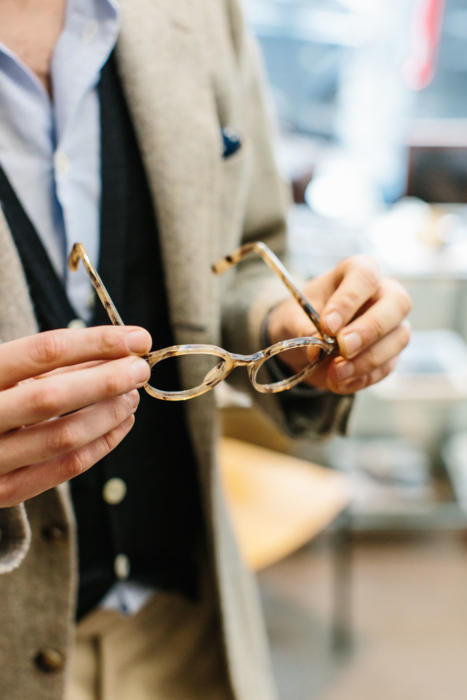
Perhaps it shouldn’t be surprising, given the vogue for everything ‘bespoke’ in recent years, that there has been an increase in men’s bespoke and customised glasses.
But the breadth of the trend is still striking.
Small ateliers that have always offered a bespoke service are reporting a doubling or even tripling of orders; individual designers are popping up offering one-on-one services; and bigger brands are investing in large-scale customisation programmes.
The attraction is two-fold: glasses that fit perfectly, and that are unique to the wearer.
“It’s amazing how many men wear glasses that just don’t fit, that are constantly falling down their nose and have to be pushed up,” says Sheel Davison-Lungley of Mayfair boutique EB Meyrowitz.
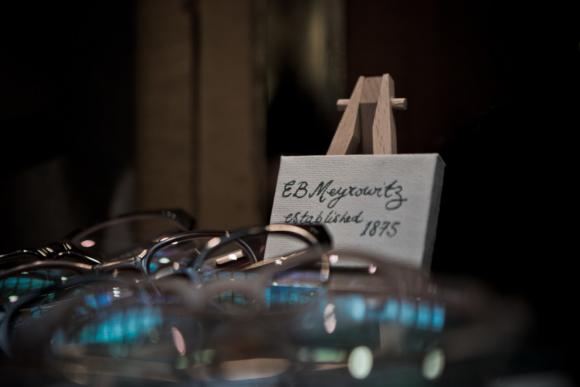
Most men are sufficiently average for ready-made glasses to be adjusted to fit them correctly. A bridge shape must just be found that fits around the nose, and then the arms adjusted to curve neatly around the ears.
But there are many outliers - and particularly with men.
“Men’s noses vary a lot, particularly in the width,” says Davison-Lungley. “Some are quite broad, and men suffer end up with bridges that pinch and sit too high. We’re increasingly seeing these men going for bespoke.”
Meyrowitz, located in London’s Royal Arcade, has seen demand for bespoke more than double in recent years, and predicts that it will eventually be half of the business.
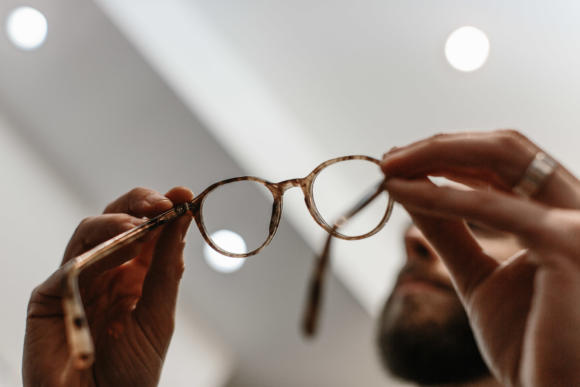
General Eyewear, meanwhile, is opening a second shop in Soho this winter partly to capitalise on its growth in bespoke.
“We see a lot of men going the bespoke route in order to create unique, personal pieces,” says creative coordinator Elliot Barnes.
General Eyewear has an archive of over 50,000 frames, and is often called on to supply or design frames for the film industry.
It made the white, bulbous glasses worn in Charlie and the Chocolate Factory (2005) - at one extreme of the design spectrum - and the simple but period-perfect frames worn by Eddie Redmayne as Stephen Hawking in The Theory of Everything (2014).
In the Camden store there are around 4,000 frames to inspire customers, and that leads to a similar range of commissions. “Some are fairly wacky,” says Barnes, citing a customer who recently commissioned a pair with one round lens and one square one.
But many others are more refined: a pair was recently completed that recreated a square 1940s frame, with wide, straight arms (known as ‘paddle’ arms).
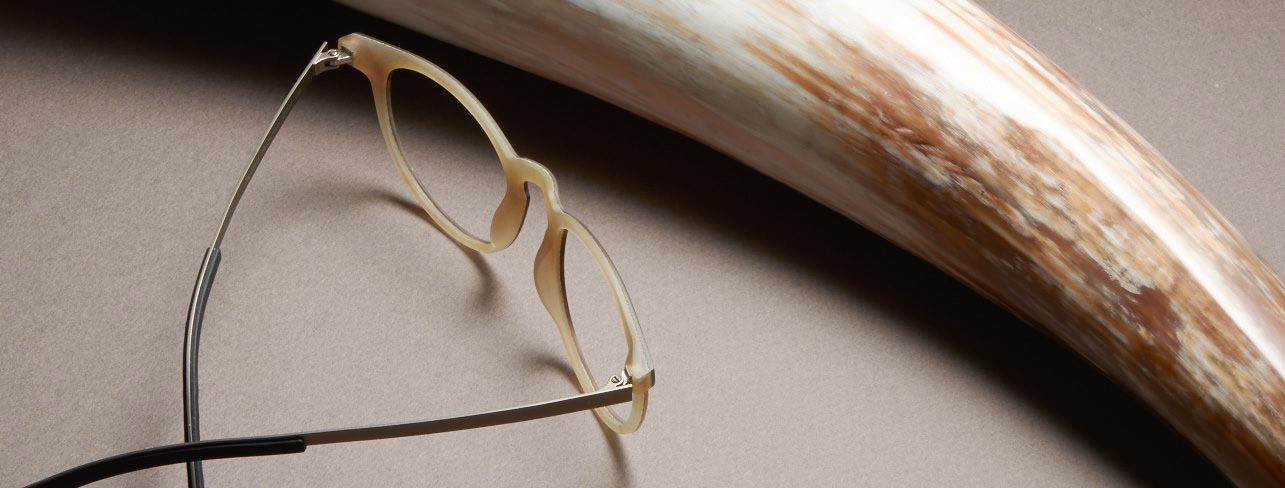
It is this subtle personalisation that has driven much of the bespoke growth at Tom Davies, a British eyewear company which was founded 10 years ago and now has five stores in London, four of which opened in the past two years - in Knightsbridge, Covent Garden, Canary Wharf and the City.
“In the Canary Wharf store many of the customers are senior bankers who don’t want to be wearing the same designer frame as their juniors,” says Davies. “They want something that is personal and unique.”
That might be an acetate frame with a slightly accentuated shape, such as sharpened corners and paddle arms, or an unusual material such as water-buffalo horn.
(Tom Davies also offers a horn frame with a carbon-fibre layer, which took three years of development to perfect - shown above.)
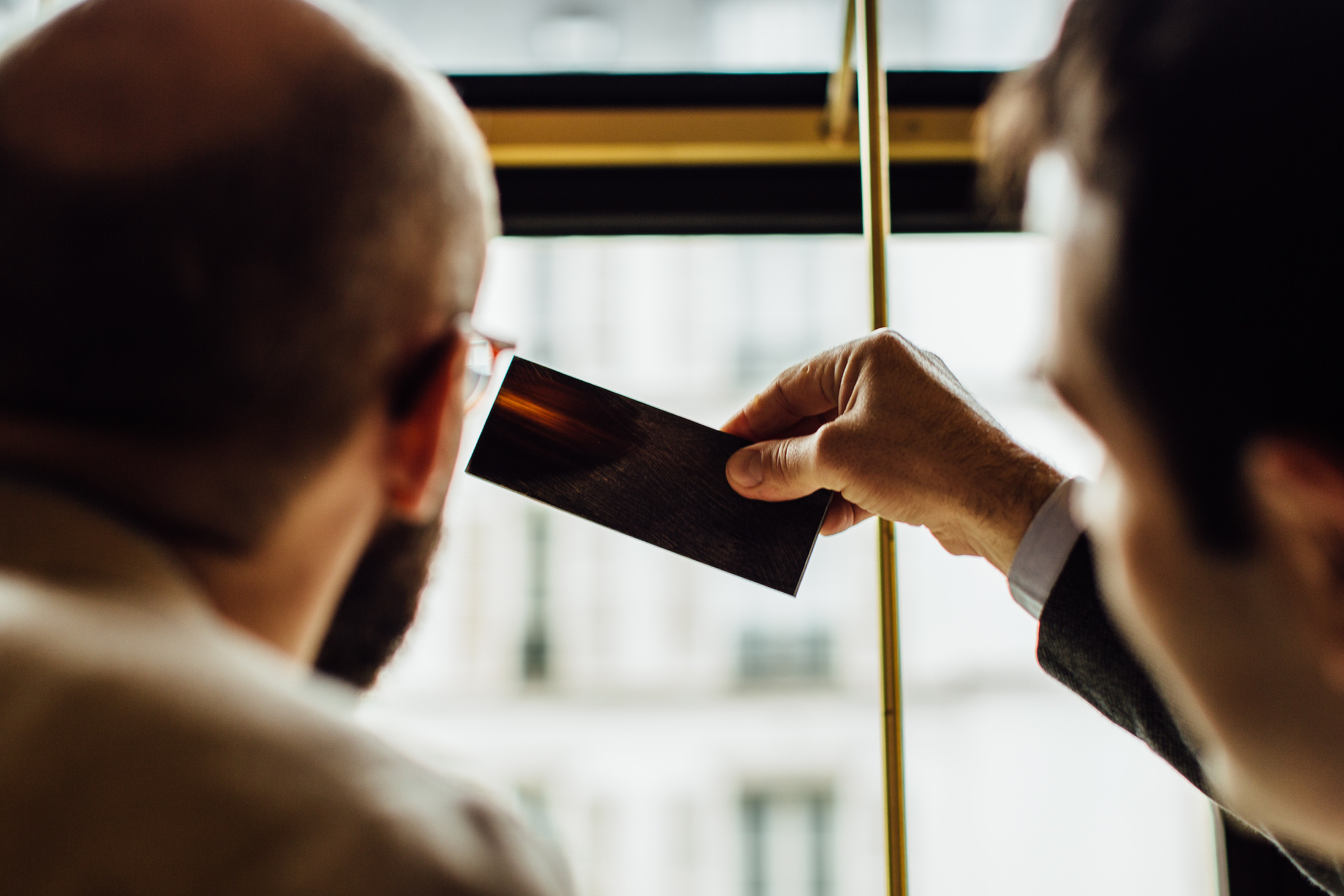
Horn is often popular for bespoke because it involves the customer picking out his own, distinct plate. “It’s a natural material, so every piece is subtly different,” says Charlie Ingham of Soho Bespoke.
“Even with the same horn plate, the dashes of different colour mean that you can completely change the look depending on where you cut. You might have a small cream flash just on the top corner, or have it running horizontally across the whole frame.”
Ingham is an eyewear designer who set up her own bespoke business two years ago, having previously worked with larger brands and in-house at Cutler & Gross.
“Today more and more people want to understand what they’re buying, to see behind the product and be more engaged with what they’re wearing,” she says.
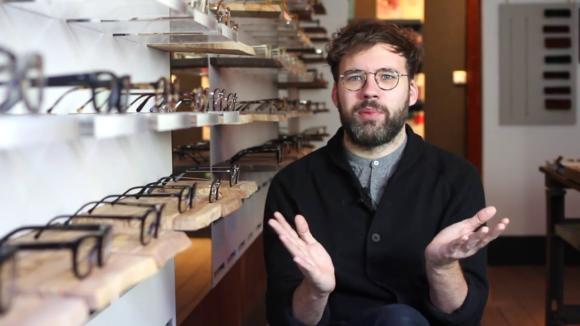
Ingham makes use of a small pool of eyewear craftsman in the UK that largely work freelance. Many bespoke houses share the same makers, although some such as Cubitts and Tom Davies are also setting up their own workshops.
Tom Broughton, the founder of Cubitts (above), has been learning to make glasses himself as well as setting up training schemes in the company’s King’s Cross workshop.
For him, part of the beauty of bespoke is the little touches that show a frame has been made by hand, not machine.
“Although with any frame most of the work will be done by manipulating a machine, there are always tell-tale signs of handwork,” he says. “The rounded edge of a bridge, for example, that is too small and delicate to be done by machine and must be filed down manually.”
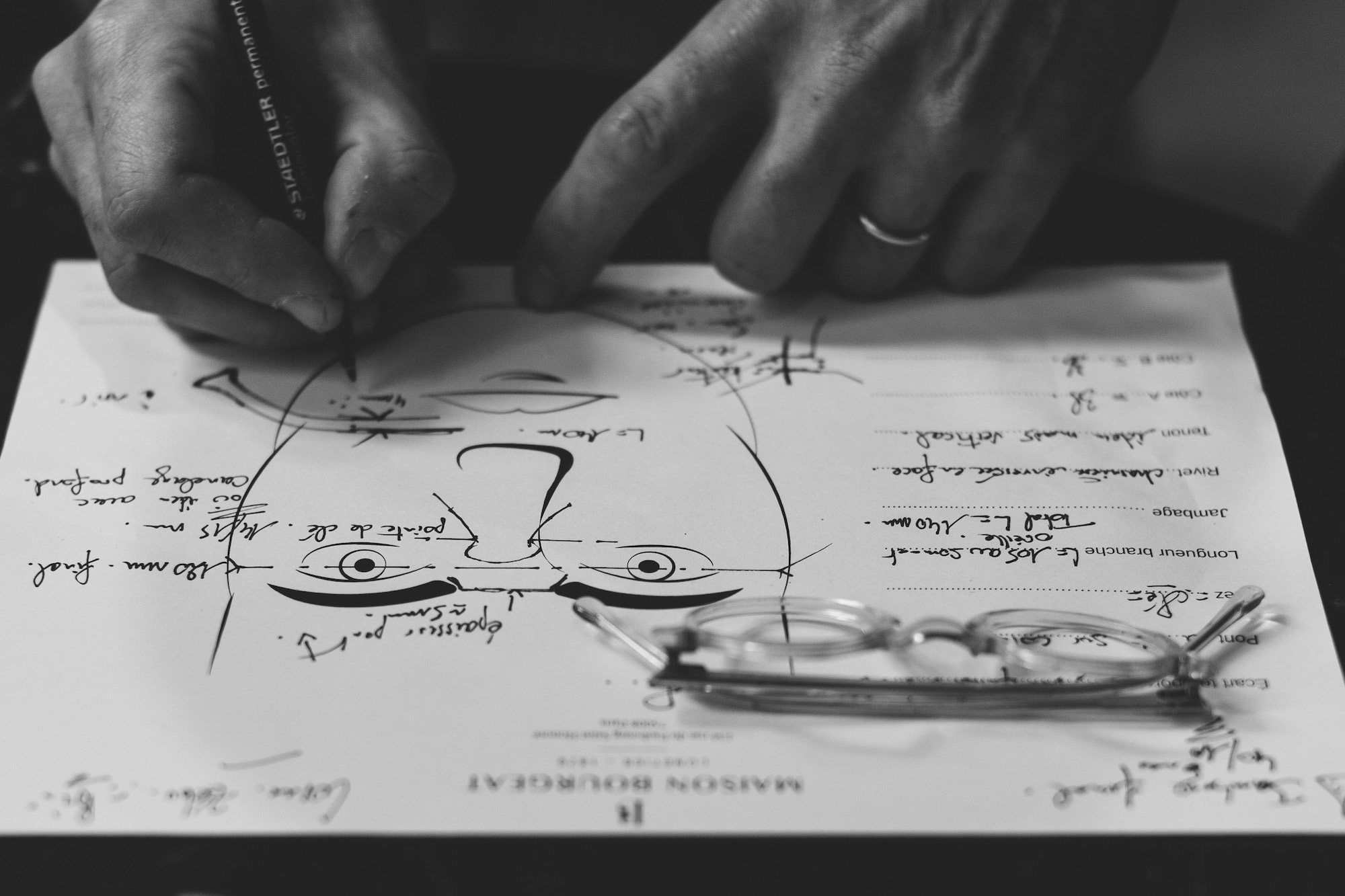
The bespoke process usually involves an initial consultation, where measurements are taken, and materials and design discussed.
There is then at least one ‘fitting’, either in the final material or (often with more precious or unstable materials, like horn) in a cheaper substitute. And the final frames are then delivered, anywhere from 4-10 weeks later.
“For me, it is this process and the interaction with the customer that is the core value with bespoke,” says Ingham.
“It is about understanding their needs and desires, even when they can’t always express them themselves. And then the relationship that builds up over the years.”
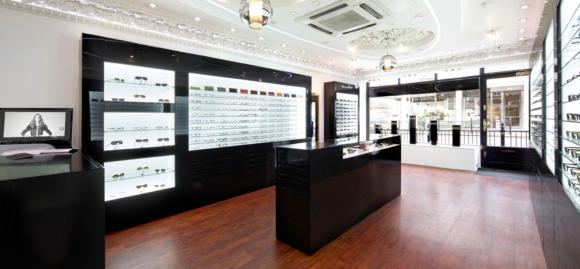
This is the point at which bespoke starts to differ from narrower, often bigger-scale customisation programmes.
For example, Tom Davies glasses are stocked in many opticians around the country, all of which can offer a bespoke service on their frames - individual measurements, a range of materials, small changes to the shape.
But in the company’s own branches (above), Tom himself offers a bespoke service that involves starting from scratch. No set models, no restrictions, just a plain piece of paper and the customer’s imagination. More similar to the traditions of couture.
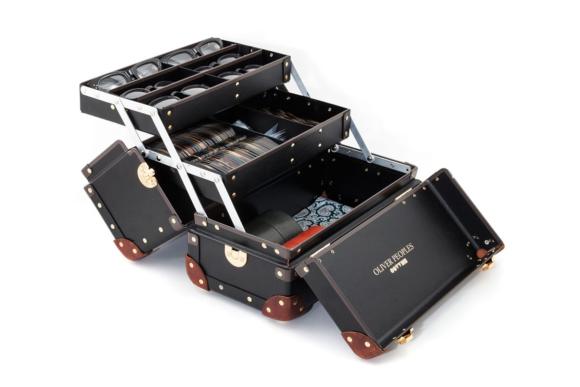
At the opposite end of the spectrum is customisation being offered by larger eyewear brands, such as Oliver Peoples (above).
The American brand offers a bespoke service that allows customers to pick from three of its classic frames, with 19 material options for the fronts and 18 for the arms.
Names or messages can be added, and even the company’s logo personalised.
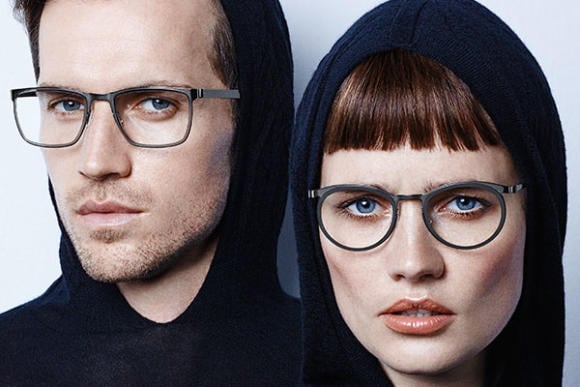
The biggest name for such customisation is Lindberg, which has been offering it for the past 25 years.
“In many ways, we saw this growth of bespoke and personalisation coming,” says sales and marketing director Peter Warrer. “We believed a perfect fit was important, and you couldn’t get that with ready-made frames; and we thought men would respond to the ability to have a frame unique to them.”
Over half of Lindberg’s business is customised frames - a proportion it too has seen growing recently.
Customers order through its partner opticians in over 120 countries around the world, and usually receive their glasses within four weeks. The range of options is huge: there are eight collections, each with 30-40 frames, with three lengths of arms and five bridge shapes.
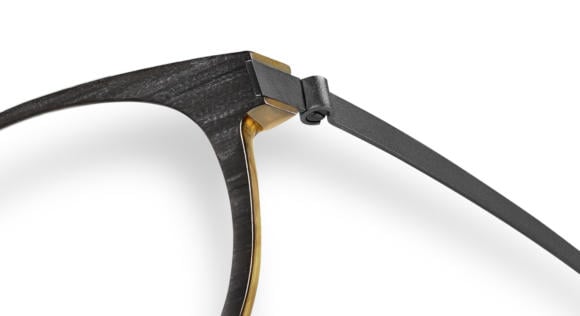
“We find that customers go for customisation because they want a unique look,” says Warrer. “But they stay for the service and the perfect fit.”
Particularly popular at the moment is Lindberg’s high-tech version of buffalo horn, which uses a thin plate of the horn backed by its trademark titanium, and then arms and nose pads that can be adjusted to fit in the same way as the rest of the range.
Lindberg’s Rim collection - which makes entire frames out of lightweight titanium wire - has also seen increasing demand this year.
Warrer puts this down to a desire for subtle style, something he sees as very Danish. “We find men want something personal but also not showy or extravagant,” he says. “Finding that balance is key.”
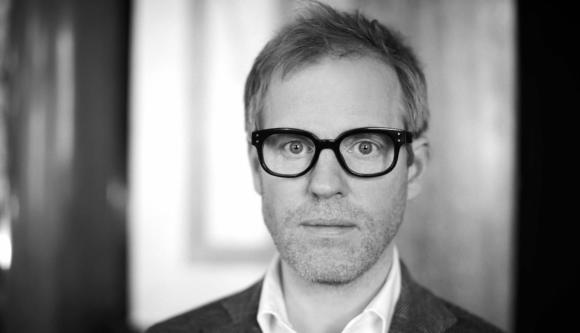
The combination of customer service and subtle, high-end design is the key reason most brands are not worried about the next big trend in bespoke: 3D printing.
“I think it will largely affect the cheaper, mass-production side of the industry,” says Tom Davies (above).
“There will eventually be fun, easy ways to design your own glasses, to pop them out of a dispenser and try them immediately. But it’s hard to think of anything more divorced from the bespoke experience.”
Brands are already using 3D printing as part of the design process, and to make bespoke prototypes. But the need for handwork in many bespoke frames, as well as the use of precious materials such as horn, makes it unlikely that the process will ever take over this intensely personal industry.
“People understand what ‘bespoke’ means now, when they walk in the store,” comments Elliot Barnes (below). “They’re not surprised when they learn we make anything for them, in any combination of materials. This is the future. The revolution is just beginning.”
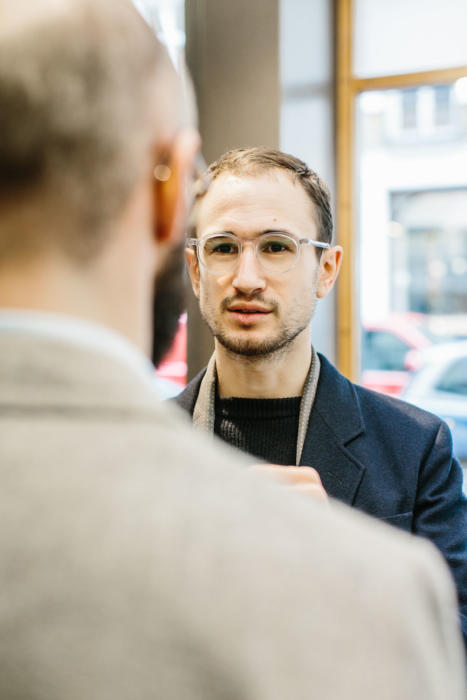
Photography: Pictures one, three, five and final, from Jamie Ferguson @jkf_man
Meyrowitz image: Andy Barnham
All other images, brands' own




























Simon…I think you had mentioned previously that Cubitts were making a bespoke pair for you, did they ever come to fruition?
Yes, and they were decent if not amazing. I’ll do a separate post on them at some point, or build it into something on Tom’s revival of UK manufacturing
Glad you’ve raised this topic.
As a glasses wearer for some 40 years the product is hugely overpriced, of very poor standard and largely unfit for purpose.
I have a high prescription that means my lens are expensive. So rather like not wanting to drink expensive wine from a plastic cup I try to go for a good frame. One that is
light enough to stay on my face for 10 hours a day,
durable enough to last afew years
and strong enough to withstand my daughters slaps !
Which boils down to a rimless, metal made, over-hinged arms frame .
It is shocking how difficult it is to meet the above needs and have a frame that ‘fits’ my face.
Most high street opticians are so lazy they can’t be bothered to look through the catalogues and offer customers different rim sizes , arm lengths and nose bridges etc.
You mention Lindberg . Yes, great frames but how can they justify the hugely inflated prices !
With the progression of 3D printing prices should be falling significantly .
I have been wearing specs for 50+ years.
But since I discovered cutler and gross in the late 80s, then theo 21 years ago on a visit to Brugge, I have paid “too much” for frames. There is a simple choice: buy beautiful frames that cost X, or horrible ones that cost X divided by 3 or 10. We have no idea where you live, but in the USA there is a company called Warby Parker that fits a nice price point. However if you think you will get a beautiful, custom frame (or anything else) made for your body for 50 euro you do not understand bespoke supply chain economics.
Thank you for this Simon. As a long time glasses wearer I thoroughly enjoyed reading it.
I’m actually in the market for a new pair of frames and paid a visit to General Eyewear recently based on your recommendatiom and dealt with Elliott. Lovely store and the breadth and scope they have in terms of customisation and options is extremely impressive. You simply wouldn’t find the same options in a high street optician.
I didn’t end up buying from them however and will most likely buy a pair of Lindbergs, so it was interesting to also see this brand featured in the piece. The optician across from Camden stables market, Eye Contacts, stocks them and I must say the owner, Jonathan, is simply the most amazing salesperson I’ve ever dealt with and immediately identified what would suit me.
It’s funny – I always disliked wearing my specs and considered them uncool, but now that I am finding my style and have found glasses that – finally – suit me, I’m feeling much more confident and see them as an asset in my style, not a weakness.
Tech savvy opticians would do well to look at 3DNA eyewear. 3D scanning and interactive creative design provide a futuristic take on bespoke. http://3DNA-eyewear.org
Simon, what do you think about Nacky (Naoki Nakagawa, Nackymade), the Japanese artisan? I do like their ready-made frames but his bespoke ones look even better.
The work is nice, but most of the styles aren’t for me – the hinges or the quirky ends to the arms
Thanks. Yes, maybe too many dragons…
Do you have a recommendation for bespoke eyewear in NYC?
No, sorry
Hi Simon, apologies for asking an ‘off topic’ question, but I couldn’t find a relevant recent post. I am looking for a grey flannel which will not lose its pleats/creases during daily wear? Can you recommend a flannel or something similar that will hold a crease? Thank you for any help you can offer.
The biggest difference is weight. Try for 13 oz at the least – perhaps the 14.5 ounce from Minnis in their Flannel book
Simon,
when you wrote the first article on Maison Bourgeat you mentioned in a reply to a comment that a piece on Maison Bonnet was coming. Is this still in the making? I’m highly anticipating it and hoping you have not turned it away.
Mads
I haven’t, but am actually awaiting for Bonnet to open their London branch, which is happening at the end of the year.
Bourgeat has since closed, by the way, but Guillaume has opened a new shop, called Ateliers Baudin
There is still a shop called Maison Bourgeat. I popped in a couple of weeks ago out of curiosity. I didn’t order anything but they were friendly and accommodating when I made some enquiries. Seems they do still offer buffalo horn and tortoise shell. Any information?
Sorry, yes the shop is still open but the company is not the same, with Guillaume having left. I’m not sure if they’re still doing bespoke or just RTW
Indivijual Custom Eyewear (www.IndivijualCustomEyewear.com) (www.BespokeCustomEyewear.com) has been hand making one of a kind frames here in the USA for over 8 years. We’ve made frames for clients in over 22 countries with our unique process that includes taking a clay mold of the client’s nose for an unparalleled precision fit and we do it all long distance. Simon, I’d like to send you a presentation that explains our process in more detail if you’d like. THANKS, Randall Barnett, Founder
Simon, what about Algha Works in East London? Wonderful heritage, and Britain’s last hand made spectacle factory.
Yes, they’re great, and make for some of the other brands here. Given the other manufactures being set up though, I’m not sure they can call themselves the last factory anymore
Another great article on bespoke eyeglasses! You prefer nonmetal, and some of the bespoke firms you’ve featured don’t seem to do metal. Whom would you recommend for a classic gold frame (roundish) with cable temples at the lower cost range of bespoke?
Try Cubitts.
Most brands don’t offer metal as it is a completely different process and requires differrent machinery. They therefore have to work with a different, third party manufacturer somewhere
Hello, Simon.
Did you manage to write a piece on your experience with Cubitts?
No, sorry
Which London artisan would you say has managed to perfect the fit for you along with top quality work?
Hi Mohamed – are we talking glasses here (as per this post)? Or tailors?
The latter is a big question, and certainly couldn’t be answered with one name – several have
Hello, Simon.
Yes, glasses. I’d like to order a pair of bespoke horn sunglasses and I’d appreciate if you could help guide me in the right direction (in London).
Thanks,
Aha.
I’ve tried General Eyewear and Cubitts – of the two I’d recommend General Eyewear probably, who have a store now on Soho Square.
Thanks, Simon.
You also tried EB Meyrowitz. Where does this one fit?
Yes good point, I wasn’t thinking of that for bespoke as we pretty much just used an existing model.
Meyrowitz are very good, though expensive. It’s worth popping in and seeing if you like the designs – that would be the thing that would justify the extra price more than anything.
Hello Simon,
I have seen a recent post on instagram, where you describe your glasses from General Eyeware and their good suiting color in yellow/brown.
Of which colour would be your second pair of glasses, if you have found your perfect yellow/brown ones?
I am interested in a grey/green one, because my eye color consists of green and grey. What do you think of this color? Is there green the third color as well? Especially if black or brown/orange or honey colored ones are not suiting. Or do you know another classical colour(combination) to consider?
Cheers,
Stephan
Hi Stephan. Consider how the colour matches your overall colouring, rather than your eyes. And I wouldn’t look at it in the same way as tailoring colours at all – just try to find what on that spectrum from black to brown to green to honey suits you best
Whats your recommended ranking on UK based shops for glasses. I know you have listed a few here but would be good to hear some kind of order
It’s complicated Daniel, given the different offerings from each, different styles and so on.
What are you looking to buy exactly?
Is there anyone in London you’d recommend for horn specs, or do you think horn is simply not worth the hassle/ cost over acetate?
It’s very personal, really a question of.how much you like the look and feel.
I’d recommend Cubitts for the low end, Meyrowitz for the high.
Hi,
It’s a nice read.
I’ve read your blog content , and I can say is that it gives great Knowledge about the “BESPOKE AND CUSTOMISED GLASSES”. it”s inspired me a lot. as i m wearing a spec it will help me to go with different model of glasses easily